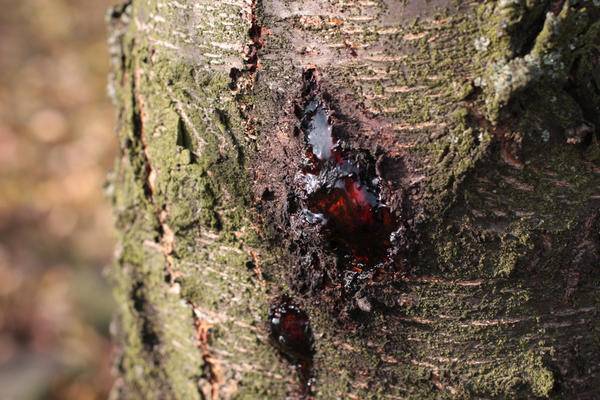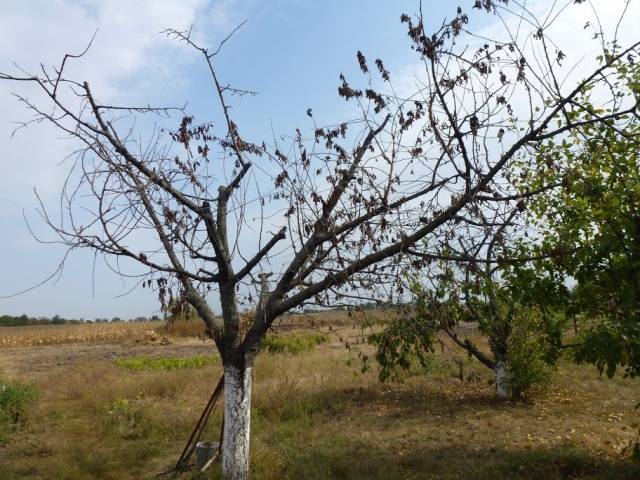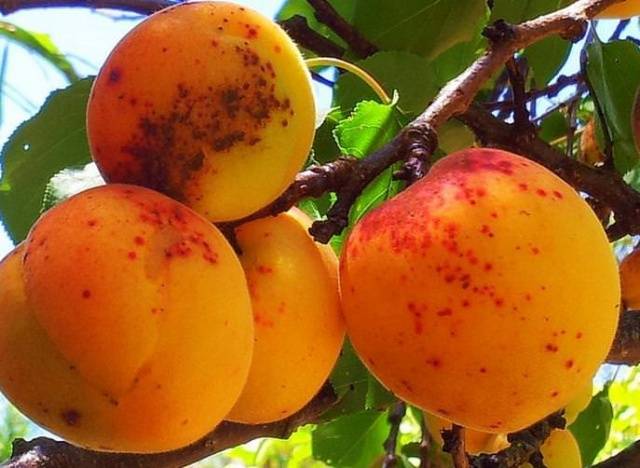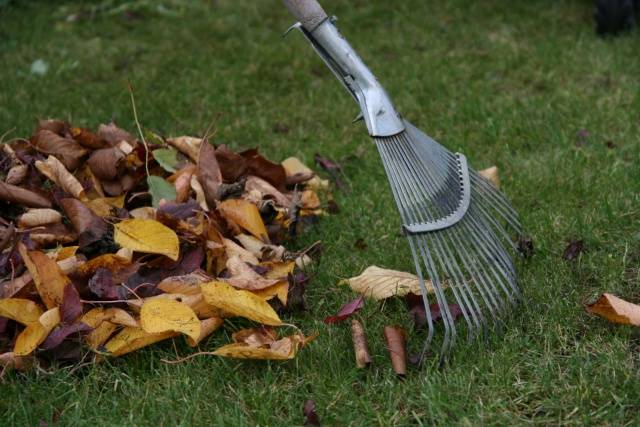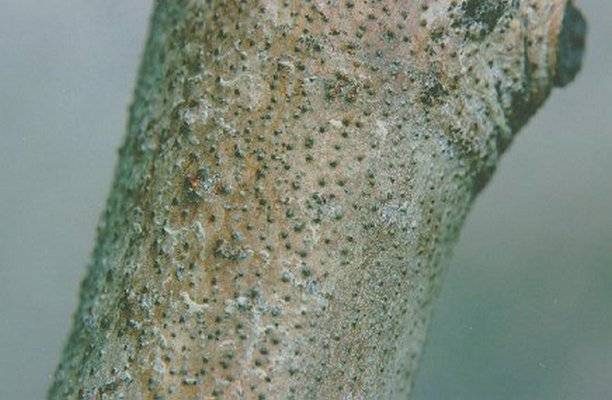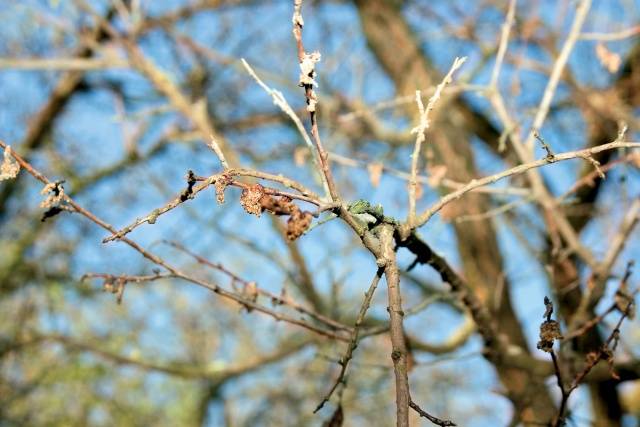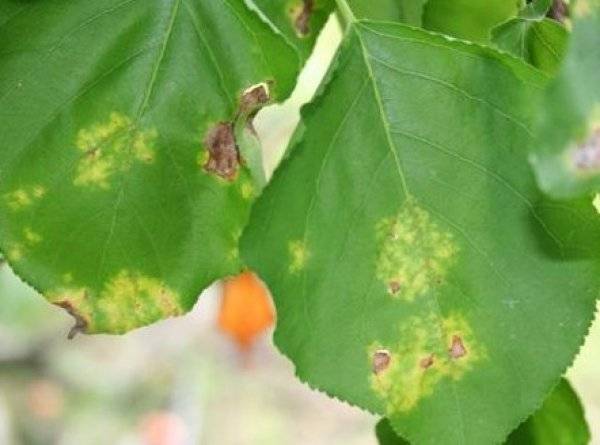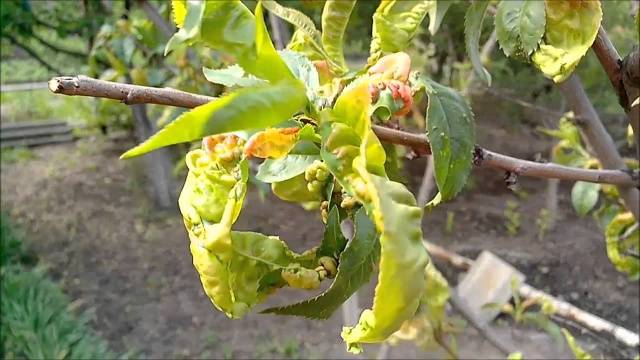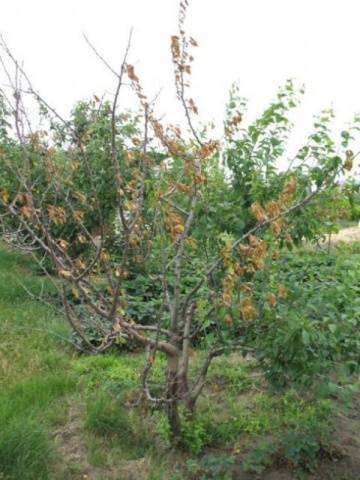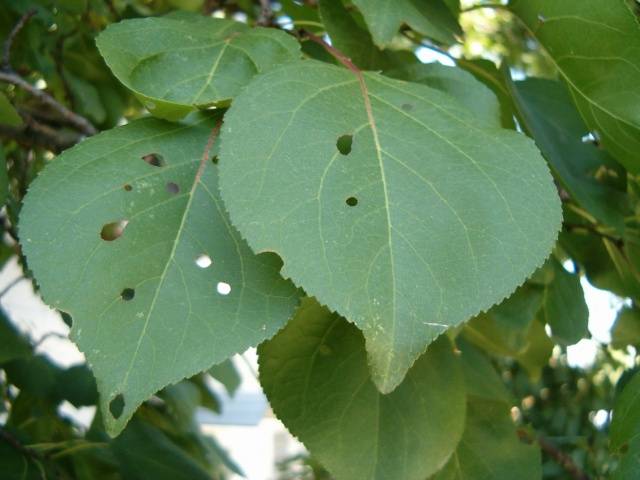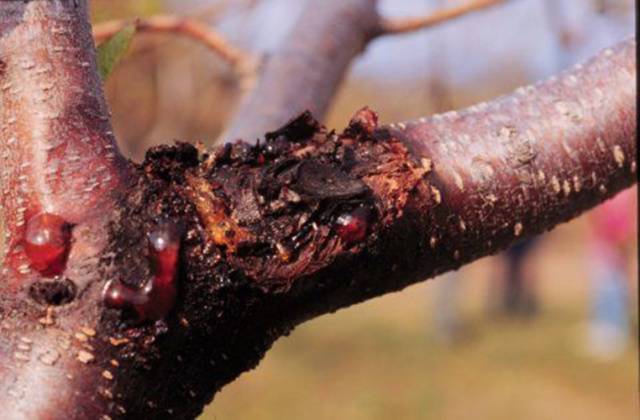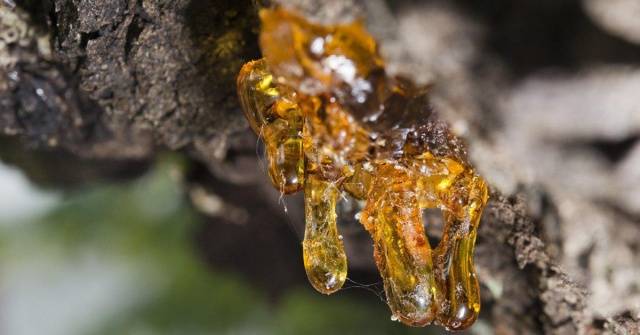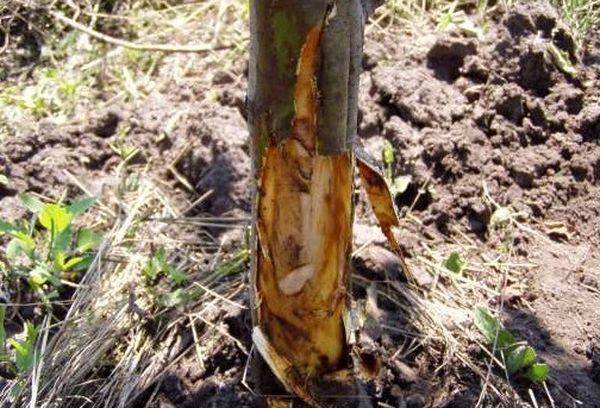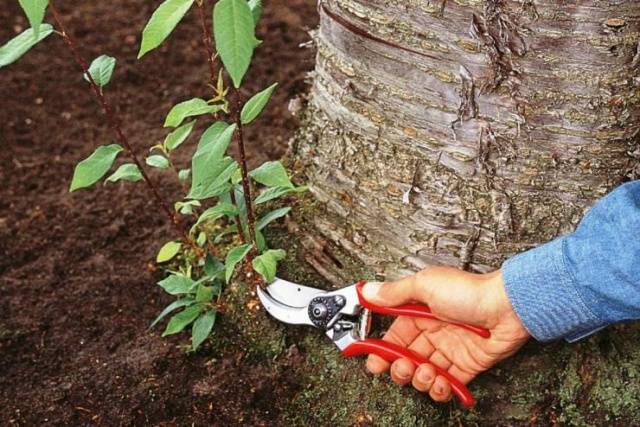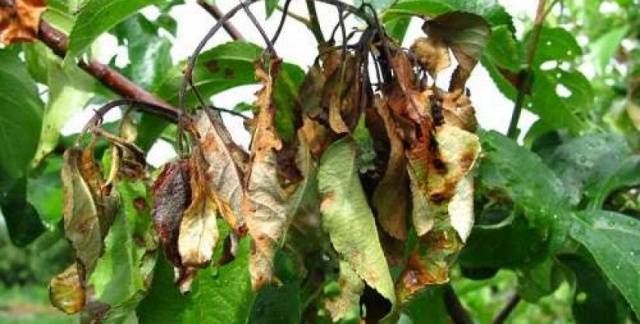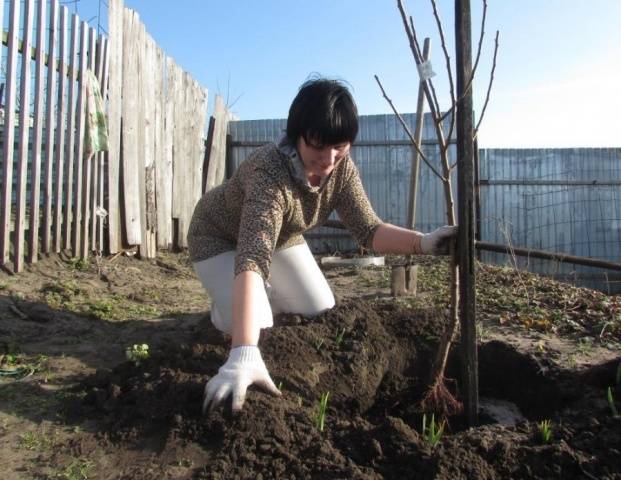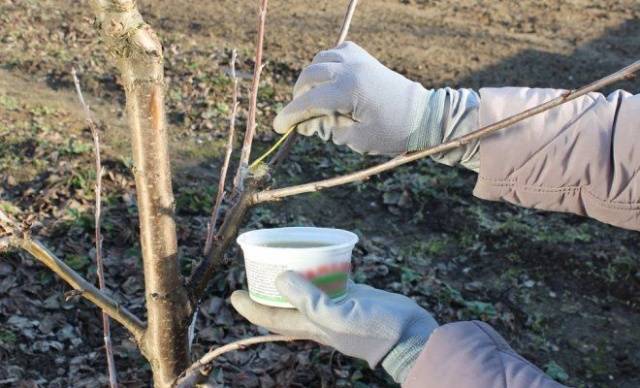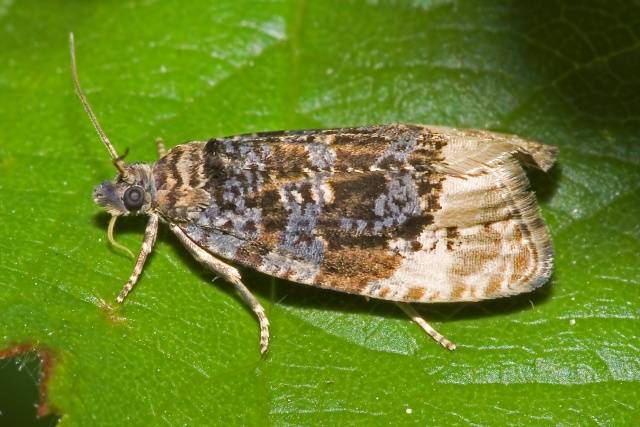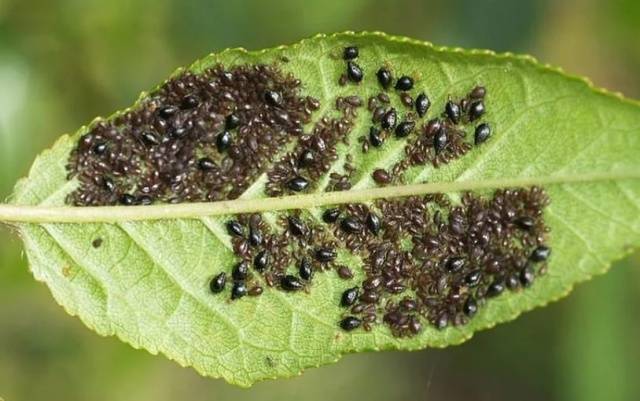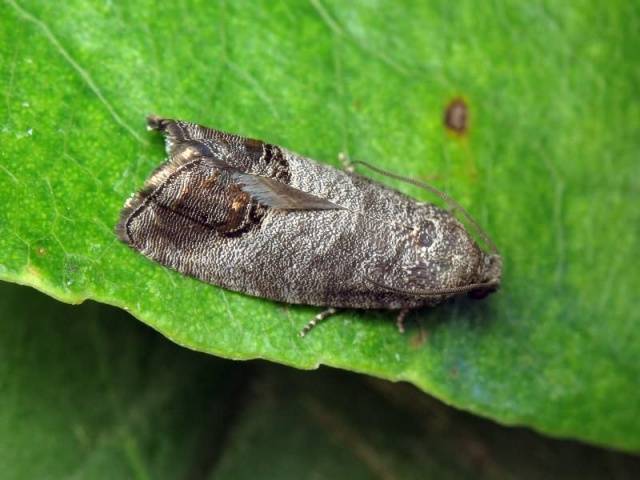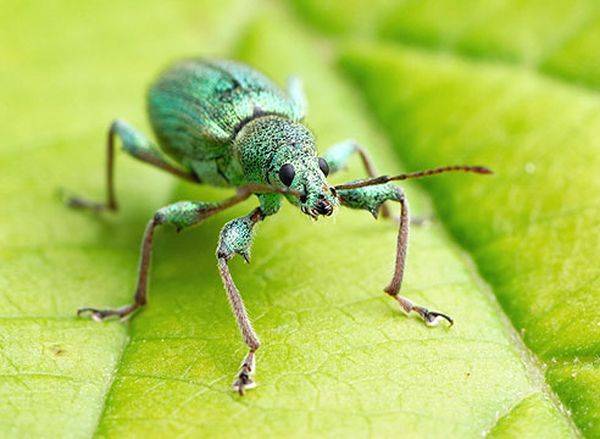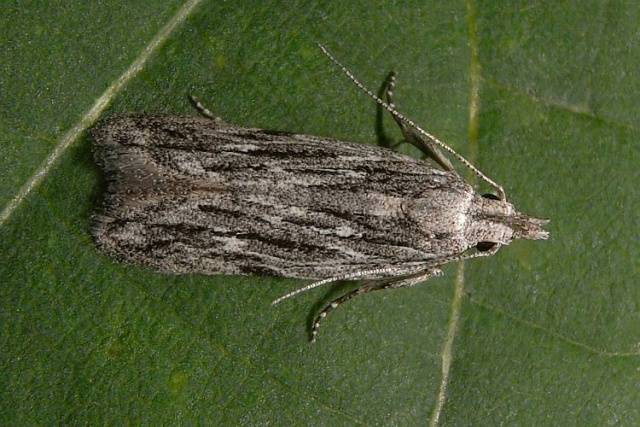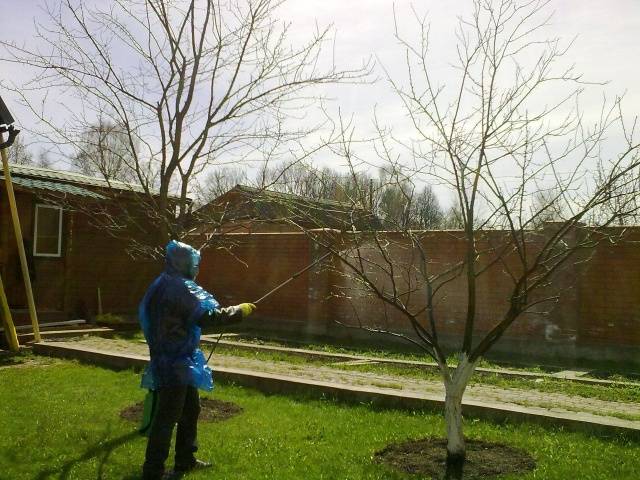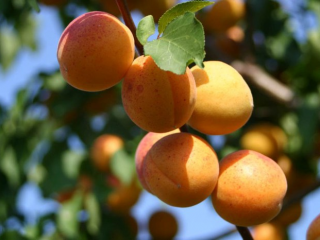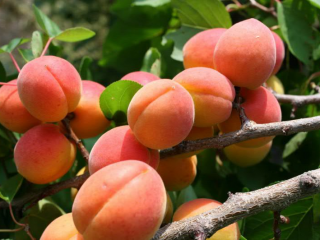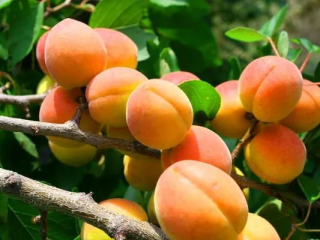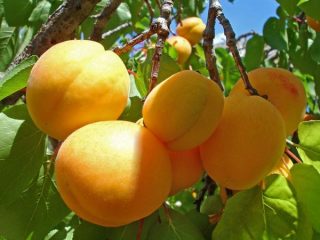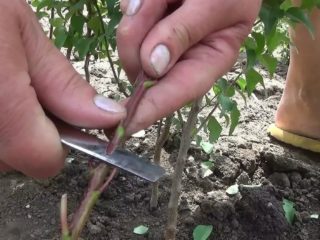Content
- 1 Diseases of apricot trees and their treatment (with photos)
- 2 Scab on apricot
- 3 What is apricot cytosporosis, how to treat the disease
- 4 Apricot leaf diseases and their treatment
- 5 Apricot bark diseases
- 6 Apricot root diseases
- 7 Other apricot diseases and methods of their treatment
- 8 Pests of apricot trees and their treatment (with photo)
- 9 Protecting apricots from diseases and pests
- 10 Conclusion
Apricot is one of the most popular and beloved stone fruit crops in our area, famous for its delicious aromatic fruits and variety of varieties. In order for a tree to always serve as a decoration for the garden and produce a generous harvest, it needs to be properly cared for. Be sure to know the most common apricot diseases and how to combat them - including what measures need to be taken to keep the trees healthy.
Diseases of apricot trees and their treatment (with photos)
According to the causes of occurrence, all diseases of apricot trees are:
- infectious;
- non-infectious.
Infectious diseases arise as a result of the activity of pathogenic agents:
- fungi;
- viruses;
- bacteria.
Non-infectious may be the result of unfavorable environmental conditions (too high or low temperatures, lack or excess of water, malnutrition, increased levels of harmful substances in the air or soil).
According to the nature of the spread of apricot disease (with photos as examples), there are:
- local (affecting individual plant organs);
- general (spreading throughout the body, which often leads to its death).
The whole variety of apricot diseases is also classified according to external manifestations (symptoms):
- plaque (powdery coating on the surface of leaves and other organs);
- change in tissue color (as an example - apricot with red leaves, also manifests itself on inflorescences and shoots);
- pustules (pads containing spores of pathogens on the surface of various organs - “rust”);
- necrosis (death of tissue in the form of various spots - apricot leaves “in a hole” with clasterosporiosis, etc.);
- mummification (affected organs turn black and dry out);
- deformation (under the influence of a pathogenic agent, apricot leaves curl and “pockets” of fruit appear);
- rot (destruction of previously softened tissues);
- wilting (cell turgor sharply weakens due to lack of water - it can also be viral, manifested in the fact that after apricot flowering the leaves curl up);
- ulcerations (depressions in softened tissues);
- tumors, growths (thickening of apricot branches, trunk, leaves as a result of a sharp increase in the number and volume of cells).
Scab on apricot
One of the most “famous” fungal diseases affecting apricot trees is stone fruit scab.
Symptoms of the disease and causes of infection
It is quite easy to identify this apricot disease.
Primary (early) infection appears on the leaves:
- at first these are greenish rounded marks with unclear boundaries, randomly scattered on their back side;
- over time, the spots become brown, hard, and can cover the entire vegetative organ, including the stalk and veins;
- with severe damage, the apricot leaves wither, dry out and fall off;
- the same thing gradually begins to happen with shoots.
Late manifestations of the disease affect the fruits:
- they become noticeable on unripe apricots in the form of gray or brown hard spots;
- as the fetus matures, the affected area expands;
- a coating of velvety structure appears on the surface, changing color from olive to black;
- the fruit cracks, its pulp is destroyed, its taste and attractive appearance are lost.
Causes of infection:
- stress is the apricot’s reaction to sudden changes in weather, which weakens the tree and makes it vulnerable to infections;
- the causative agent of the disease is activated at high humidity, during sharp temperature fluctuations (in spring);
- preventive measures not carried out in a timely manner or carried out incorrectly.
What causes scab
The causative agent of the disease is a pathogenic fungus that overwinters in the form of small dark balls on fallen leaves. In the spring, its spores are released and dispersed during rainy, humid weather, infecting healthy stone fruit trees.
How to spray apricot against scab
As control measures, apricot should be treated against scab with new generation fungicides - Kaptan-50 (0.3%) or Topsin-M (0.1%).
Spraying schedule:
- the first time - before flowering;
- after flowering is completed, repeat;
- further – every 10–14 days, 3 to 6 times as necessary.
Fighting scab with traditional methods
You can try to treat apricot scab using folk remedies:
- irrigate the trunk, crown of the tree, as well as the tree trunk circle with a solution of mustard powder (40 g per 5 liters of water);
- in spring, summer, and early autumn, spray with a rich pink solution of potassium permanganate.
A set of preventive measures
If apricot scab treatment is carried out when signs of the disease have already appeared, then preventive measures are designed to prevent the trees from becoming infected.
For these purposes it is necessary:
- carefully water the apricots without over-moistening the soil;
- carry out annual pruning of branches, removing dry and damaged ones;
- weed out thoroughly in summer weeds, in the fall - collect and burn fallen leaves;
- regularly loosen the soil in the tree trunk circle;
- inspect shoots, leaves and fruits of trees for the presence of fungus;
- carry out preventive spraying in spring apricots with Bordeaux mixture (1%), lime-sulfur solution, fumigation with sawdust.
What is apricot cytosporosis, how to treat the disease
Very often you can hear a complaint from gardeners: “the apricot is drying up, the leaves and twigs are withered.” This is a characteristic sign of another serious disease - cytospora drying. Spores of its causative agent (fungus) infect wood in places of damage, on saw cuts, and cuts.
Signs of the disease:
- As a rule, at the beginning of summer, after flowering, apricot’s young branches and shoot tips suddenly wither and dry out;
- characteristic brown stains form on them;
- the bark acquires a brown tint, many wounds appear on it, oozing gum;
- Gradually, the apricot wood is covered with black tubercles, which next year will turn into coarse growths of a fungus that has grown deep inside.
It is possible to save a tree only at the initial stage of the disease, so you need to act as soon as possible:
- All affected branches should be removed, taking 10 cm from their healthy part;
- Be sure to trim the apricot in the spring;
- the wound surface must be covered with garden varnish, deep hollows must be cemented;
- In the fall, add fertilizing to the soil (phosphorus, potassium), and do not forget about systematic watering.
Apricot leaf diseases and their treatment
The gardener will find it useful to have a brief description of the diseases of apricot trees (with photos for a visual representation), the manifestations of which are clearly visible on the leaves.
Gray mold (moniliosis) - spreads by insects and wind, mainly in cloudy weather:
- apricot dries after flowering, young shoots wither and turn brown;
- the fruits become covered with dark spots and rot;
- Apricot leaves curl and dry out, taking on the appearance of being burnt.
Measures to combat the disease:
- timely destruction of affected leaves, shoots, fruits;
- spraying with Bordeaux mixture (3%) at the stage of bud swelling;
- treatment of the crown of a diseased apricot with a solution of Topsin-M, Strobi, Topaz with the addition of laundry soap shavings.
Gnomoniosis, or brown spot, is a disease that affects the crown and fruits:
- first appears as yellow marks on the leaf blades;
- the leaves on the apricot turn red, turn brown, and then dry out;
- the fruits fall off before ripening, or become twisted and ugly.
Measures to combat the disease:
- thorough cleaning of the affected areas of the tree;
- treating the soil under apricot with a solution of copper sulfate (1%);
- in early spring, spray the crown with Bordeaux mixture.
Apricot leaf curl (pictured) is one of the most dangerous fungal diseases, which can result in complete loss of the crop:
- the leaf blades become covered with yellow blisters, which gradually change color to dark red;
- their shape becomes distorted, swelling (“curly”) of a reddish color appears;
- Following the massive death of leaves, the death of apricot fruits and deformation of shoots begin.
Measures to combat the disease:
- removal of all damaged organs;
- treatment of apricot with pesticides containing copper;
- adding organic fertilizers to the soil in spring.
Verticillium wilt is an apricot disease caused by a soil-dwelling fungus:
- apricot leaves turn yellow, curl, and fall off en masse, starting from the bottom of the tree;
- This is followed by the death of the shoots, slowly affecting the entire plant to the very top.
Treatment measures:
- spraying with a solution of Fundazol, Vitaros, Previkur (0.2%);
- timely prevention of apricot disease (avoiding root damage, purchasing quality seedlings, antifungal soil treatment).
Viral wilt often affects stone fruit crops after grafting or budding:
- the apricot leaves, which bloomed at the same time as the flowers, wither;
- the plates become thicker, curl, and become stained;
- Then the fruits are affected - the pulp dies, starting from the seed.
This apricot disease is easier to prevent than to treat:
- when grafting and pruning, use tools treated with disinfecting solutions or heated;
- for prevention, treat the trunk with lime and copper sulfate;
- prevent damage by pests, apply fertilizing correctly.
Clusterosporiasis, or perforated spotting, most often affects trees in spring and in autumn:
- holes appear on apricot leaves, preceded by brown spots;
- the shoots become covered with dark marks from which gum oozes.
Measures to treat the disease:
- pruning and destruction of affected parts of the tree;
- spraying in spring and autumn with Bordeaux mixture (4%) or copper sulfate (1%);
- Horus is effective in the “rose bud” phase and is safe for bees.
Apricot bark diseases
It is worthwhile to dwell in more detail on the description of apricot diseases with photographs of their manifestations on the tree bark.
The Valsa mushroom appears as nodular growths (cankers) of bright orange color on the trunk and branches. Getting inside through wounds and cracks, it affects the wood tissue and interferes with the normal circulation of sap.
Measures to combat the disease:
- do not over-moisten the soil;
- regularly prune;
- If affected, use fungicides.
Gum discharge is sticky amber “tears” that appear in abundance in the cracks of branches and trunks. This is a sign that the tree is sick or is forced to grow in unfavorable conditions.
Damage to the cortex can also be caused by:
- frostbite;
- sunburn;
- mosses and lichens parasitizing on it;
- accidental mechanical damage when caring for wood;
- activity of pests and rodents.
Recommend:
- carefully peel the bark down to living wood;
- allow the surface of the wound to dry slightly;
- disinfect it with an antifungal drug;
- treat with healing putty - garden varnish.
Instead of garden varnish, they often use a mixture of clay and mullein, diluted with a solution of Bordeaux mixture, copper sulfate or other copper-containing preparation.
Apricot root diseases
It is much easier to identify apricot disease by leaves or bark than by roots.However, this part of the plant is also very vulnerable and requires careful attention and proper care.
Spores of many fungi are found in the soil. They infect the tree, penetrating through cracks and damage, including the roots. To avoid this, you should:
- When choosing a seedling for planting, pay attention to ensuring that its root system is healthy and developed;
- very carefully carry out gardening work inside the tree trunk: applying fertilizers, loosening the soil, mulching;
- Do not plant nightshade crops (tomato, eggplant, pepper) next to the apricot tree, which can serve as a source of infection that is transmitted through the roots.
Young shoots often appear around the apricot - root shoots. As a rule, this is also evidence of an unfavorable condition of the roots: damage to them by frost, rodents, or mechanical trauma. Although there are varieties for which the presence of offspring is simply their feature.
Other apricot diseases and methods of their treatment
Here are a few more apricot diseases and their treatments you should know.
Fire blight is a severe and difficult to treat disease of fruit trees that can destroy an entire orchard:
- The flowers are the first to suffer - they turn brown, wither and fall off;
- after flowering, the branches and young shoots dry on the apricot;
- leaves and buds turn black;
- There are cracks on the bark from which a milky-white liquid oozes.
Control measures:
- spraying a diseased tree from May to June with Azophos solution (5%) and antibiotics (streptomycin, kanamycin);
- treatment during the flowering period with preparations containing copper;
- uprooting of wild crops and hawthorn (potential carriers of the disease) within a radius of 100 m around the orchard.
Apoplexy is another dangerous disease caused by metabolic disorders due to sudden changes in environmental conditions (in particular, temperature changes):
- As a rule, at the beginning of summer the leaves begin to wither sharply (for no apparent external reasons);
- the branches dry out;
- the wood on the trunk dries out.
The tree will quickly die if measures are not taken in time:
- cut off the affected branches, disinfecting and treating all cut areas with garden varnish;
- to prevent the disease at the end of October, the trunk and branches of the apricot need to be whitened;
- Be sure to cover the tree for the winter, especially young ones.
Gardeners often complain that apricots lose color. This phenomenon should be carefully studied, as there may be several reasons:
- This is how moniliosis, which was discussed above, manifests itself;
- if the apricot variety is not self-fertile, perhaps the fact is that there is no pollinating tree nearby, or it does not bloom;
- there is a possibility that the problem is bad weather (cold or strong wind), as a result of which bees and other insects are not active enough.
Prevention of apricot diseases
General preventive measures will help minimize the risks associated with diseases of apricots and other fruit trees on the site. Do not neglect these seemingly simple actions, which can actually make a gardener’s life much easier:
- use only healthy seedlings when planting;
- timely and correctly feed trees with fertilizers;
- fight weeds and pests;
- Before pruning and grafting, be sure to disinfect tools and hands;
- treat cut areas with special disinfecting solutions;
- monitor the condition of the trunk, branches, leaves throughout the season;
- promptly remove and burn fallen leaves;
- In the fall, be sure to do moisture recharging.
Useful tips for the treatment and prevention of apricot diseases are given in the video
Pests of apricot trees and their treatment (with photo)
Now we should dwell briefly on the most common apricot pests and the fight against them (photos will help you imagine what kind of insects we are talking about).
The leaf roller is a small gray-brown nocturnal butterfly. Its caterpillars eat leaves and buds in the spring. You can often see apricot leaves curling up. The caterpillar lives in these “tubes”. Such leaves need to be torn off and destroyed.
Aphids are colonies of small black, green or brown insects that feed on the cell sap of the vegetative organs of a plant. They settle on the underside of leaves, young shoots, which first curl and become sticky, and eventually turn yellow and dry out. Where aphids appear, there is always an anthill nearby.
The codling moth is a small dark butterfly. Its caterpillars are a real scourge of the orchard. Hatching in late summer and early autumn, they infect fruits en masse.
Weevils are small blue or green beetles that overwinter in damaged bark and top soil. They damage leaves, buds, flowers, and fruits. When severely damaged, apricot blooms poorly and sheds a significant part of its foliage already at the beginning of summer.
The fruit stripe moth is a gray moth with thin black stripes on the body and wings. Its caterpillars cause severe damage to the shoots and buds of stone fruit trees, gnawing into them and thereby causing death.
How to control pests on apricots
General recommendations for pest control of apricot trees are as follows:
- promptly trim and burn damaged shoots, collect and destroy affected leaves and fruits;
- whitewash tree trunks;
- loosen the soil in the tree trunk circle, destroying insects wintering there;
- treat trees with insecticidal preparations suitable for controlling specific apricot pests.
Protecting apricots from diseases and pests
Information about apricot diseases, pests and methods of combating them should be supplemented with tree protection measures to prevent disaster.
Treatment of apricot in spring against pests and diseases
Spring treatment of apricot against diseases and pests includes:
- carrying out sanitary tree pruning and thinning of branches before the buds swell;
- removal (using a special metal brush) of larvae, caterpillars, egg clutches, green lichen;
- before the buds bloom, spray the tree with Bordeaux mixture (3%);
- 2 weeks after flowering (and then according to the instructions of the drug used), treat the crown with Bordeaux mixture 1%, copper oxychloride, Zineb or Captan.
Processing of fruit crops in summer and autumn
Prevention of apricot diseases and pests should also be carried out in summer and autumn.
In the summer (but no later than 2 weeks before the start of harvest), trees can be treated with Chorus, colloidal sulfur, and antifungal drugs.
Autumn prevention involves the following:
- after the leaves fall, it is recommended to treat the trees with a urea solution (700 g per 10 liters of water);
- in late autumn, spraying with preparations containing copper is indicated;
- if you did not have time to do the treatment before the onset of cold weather, use iron sulfate.
Conclusion
Apricot diseases and the fight against them are inevitable realities that every gardener faces who grows these trees on their site. Timely and correctly recognized symptoms of disease or harmful insect activity will help determine the necessary course of action and select medications to save the tree with the minimum possible damage to its health.We should not forget about proper and regular prevention - it is always easier to prevent a disease than to treat it later.
